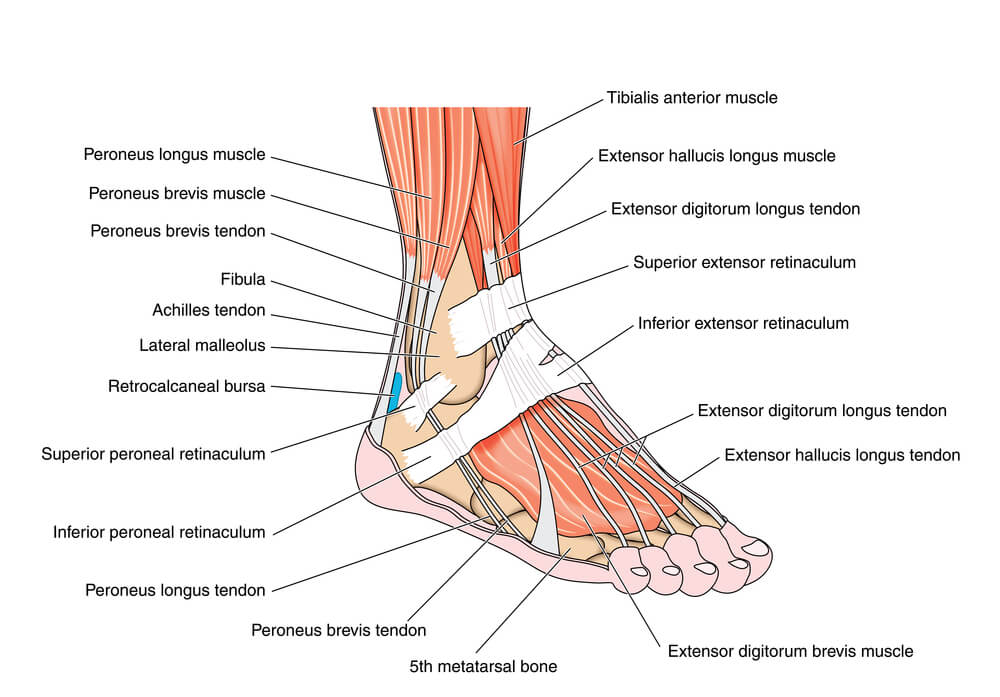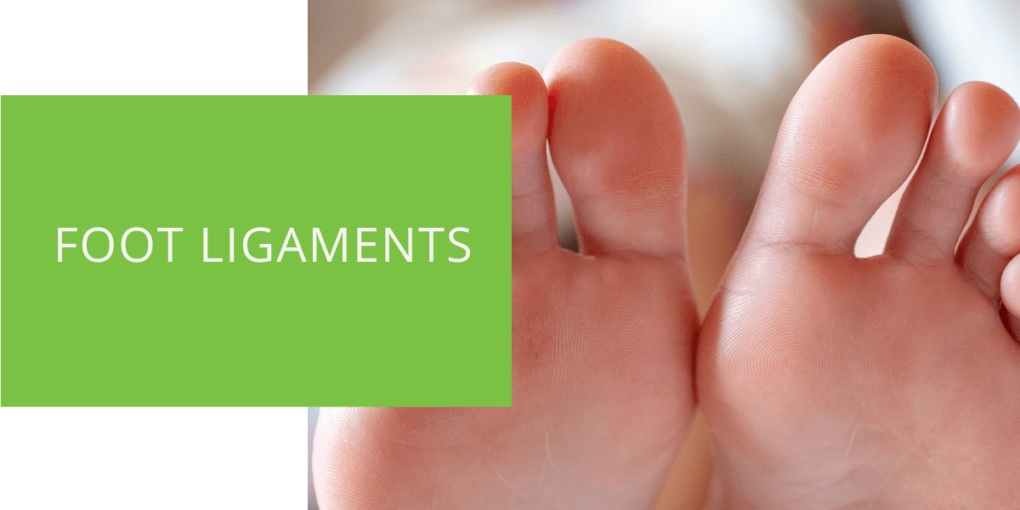Understanding Foot Ligaments
Foot ligaments are the unsung heroes of our feet, quietly working behind the scenes to ensure stability and mobility. In this comprehensive guide, we will delve deep into the world of foot ligaments, from their intricate anatomy to managing ligament injuries. Join us on this educational journey to ensure your foot health stays on the right track.
Key Takeaways
- Foot ligaments are integral to ankle and foot stability, connecting bones and preventing excessive joint movement.
- Recognizing symptoms of torn ligaments and seeking prompt medical attention is crucial to prevent long-term complications.
- Treatment options for foot ligament injuries range from non-surgical approaches like physical therapy to surgical interventions, all tailored to the injury's severity and individual needs. Proper rehabilitation and preventive measures are essential for a full recovery and future injury prevention.
The Anatomy of Foot Ligaments
Before diving into the specifics of foot ligaments, it's crucial to understand the anatomy of the ankle and foot, where these remarkable structures play a central role.
The Tibia and Fibula Connection
At the heart of the ankle joint lies a remarkable connection between two major bones: the tibia (shinbone) and the fibula (outer lower leg bone). These two bones come together to form a hinge-like joint that enables the flexion and extension of our feet. The ligaments connecting the tibia and fibula are the linchpins of joint stability.
The tibia and fibula create a dynamic interplay within the ankle joint, with ligaments as the crucial support system. This complex arrangement allows for various degrees of movement while maintaining stability.
Upper Ankle and Lower Ankle Ligaments
Within the ankle joint, multiple ligaments play specific roles in maintaining stability and preventing excessive movement.
Medial Collateral Ligament (MCL)
The MCL, situated on the inner side of the ankle, serves as a guardian against excessive inward rolling of the foot. It's a primary stabilizer in preventing sprains.
Lateral Collateral Ligament (LCL)
Conversely, the LCL resides on the outside of the ankle, acting as a shield against excessive outward rolling. This ligament's strength is vital for lateral stability.
Anterior Talofibular Ligament (ATFL)
The ATFL extends from the front of the fibula to the talus bone, bolstering the front of the ankle joint. It plays a pivotal role in preventing forward ankle sprains.
Calcaneofibular Ligament (CFL)
The CFL reinforces the lateral side of the ankle, providing additional lateral stability to the joint.
Posterior Talofibular Ligament (PTFL)
Positioned at the back of the ankle, the PTFL ensures posterior stability, especially during plantarflexion.

Ligaments vs. Tendons: What's the Difference?
Before we proceed further, let's clarify the distinction between ligaments and tendons. While both are fibrous connective tissues, ligaments connect bone to bone and provide joint stability, whereas tendons connect muscle to bone and facilitate movement.
This fundamental difference in function highlights the critical roles of ligaments in maintaining structural integrity and preventing excessive joint movement.
Ligaments in the Foot: Their Significance
Within the foot, ligaments complement the actions of muscles to ensure proper movement and support. Key ligaments connect various parts of the foot, including the tarsal bones, metatarsal bones, and the arch.
Plantar Calcaneonavicular Ligament (Spring Ligament)
The plantar calcaneonavicular ligament, commonly known as the "Spring Ligament," connects the calcaneus (heel bone) to the navicular bone, playing a vital role in maintaining the foot arch.
Lisfranc Ligaments
The Lisfranc ligaments span the top of the metatarsal bones, ensuring their stability and proper alignment.
Common Problems: Torn Ligaments and Foot Pain
While foot ligaments work tirelessly to maintain stability, they are not immune to injury. Torn ligaments are prevalent, resulting in significant discomfort and mobility limitations.
Recognizing the Symptoms of a Torn Ligament
Identifying a torn ligament is crucial for timely intervention. The following symptoms may indicate a ligament injury:
- Swelling around the affected area: Inflammation is a common response to ligament damage.
- Bruising and discolouration: Blood vessels may rupture, causing bruising.
- Pain and tenderness: Ligament injuries often lead to localized pain and tenderness.
- Difficulty bearing weight: Instability can make putting weight on the affected foot challenging.
- Joint instability: A feeling of the joint "giving way" can be a telltale sign of ligament damage.
Recognizing these symptoms early can help individuals seek appropriate medical attention, preventing further damage and expediting healing.
Complications and Long-Term Effects
Neglecting ligament injuries can lead to chronic pain, decreased joint stability, and the development of conditions like osteoarthritis over time.
Chronic pain and instability can significantly impact one's quality of life. Addressing ligament injuries promptly is essential to prevent long-term complications.
Treatment Options for Foot Ligament Injuries
Treating foot ligament injuries requires a tailored approach, depending on the severity of the injury and individual factors.
Initial Assessment and Diagnosis
A comprehensive evaluation by a skilled podiatrist is essential to determine the most suitable treatment plan. This assessment may involve a physical examination, imaging tests, and a detailed discussion of your medical history and symptoms.
Accurate diagnosis is the cornerstone of effective treatment. It guides healthcare professionals in crafting personalized strategies for recovery.
Non-Surgical Approaches to Healing
Less severe ligament injuries can often be managed without surgery using various conservative treatments:
Rest, Ice, Compression, Elevation (RICE)
The RICE protocol is a standard initial treatment to reduce inflammation, relieve pain, and promote natural healing.
Physical Therapy
A customized rehabilitation program, overseen by a physical therapist, can help strengthen surrounding muscles and improve joint stability.
Bracing and Support
Using ankle braces or supports provides additional stability during healing, reducing the risk of re-injury.
Surgical Interventions for Severe Cases
In cases of severe ligament damage, surgical intervention may be the best course of action. Procedures like arthroscopic surgery offer minimally invasive options with quicker recovery times.
Surgery is typically considered when ligament injuries are extensive, and non-surgical approaches may not provide the desired results. Discussing the pros and cons of surgical options with a qualified surgeon is essential.

Rehabilitation and Recovery
Rehabilitation is a pivotal recovery phase following a foot or ankle ligament injury. Its primary goal is to restore strength, flexibility, and function to the affected area.
The Importance of Proper Rehabilitation
Under the guidance of a skilled physical therapist, patients engage in a series of exercises and techniques designed to regain mobility, strengthen muscles, and prevent re-injury.
Proper rehabilitation is not just about healing; it's about ensuring that patients regain their full range of motion and confidently return to their daily activities.
Gradual Return to Physical Activities
Returning to sports or other physical activities should be a gradual process. Rushing back into high-impact activities can increase the risk of re-injury.
A structured and gradual approach to resuming physical activities minimizes the chance of setbacks and promotes a safe return to full activity levels.
Preventing Recurrence of Ligament Injuries
Prevention is the best defence against future ligament injuries. Several measures can help safeguard foot and ankle health, including wearing appropriate footwear, using orthotic inserts, and maintaining good foot hygiene.
Proactive measures go a long way in preventing ligament injuries. Taking care of your feet is an investment in your overall well-being.
Expert Care at ePodiatrists
At ePodiatrists, we are passionate about providing expert care for foot and ankle ligament injuries. With years of experience and a commitment to patient-centered care, our team is dedicated to creating personalized treatment plans tailored to your unique needs.
Conclusion
Comprehending the intricate structure and function of foot ligaments is paramount for maintaining the health and stability of your feet and ankles. Whether dealing with a torn ligament or seeking preventive care, ePodiatrists offers the expertise and guidance you need. Take the first step toward healthier feet by scheduling an appointment with us today.

